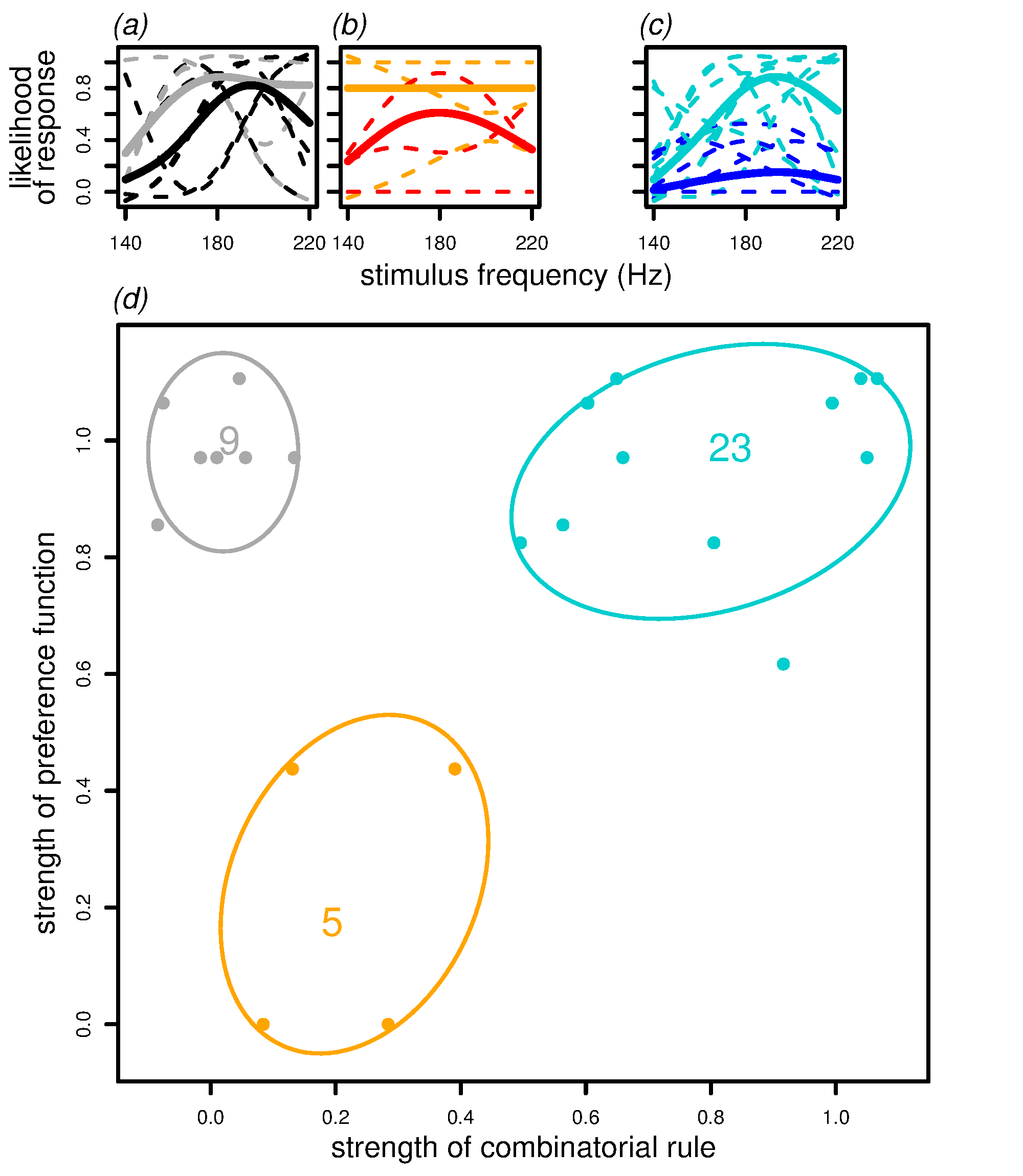Two new papers on combinatorial processing in insects

Bretta Speck, Rafa Rodríguez, several great students (Becky Holt, Sara Seidita, Sam Belo, Sam Johnson and Caley Conley) and I found evidence of combinatorial processing in an insect and researched how it could influence the evolution of complex signal in two new publications.
In the paper led by Bretta, we used synthetic signals made with different combinations of two signal elements and found that females care about the order and composition of male signals, accepting only signals containing the both signal element in the natural order. The ability for combinatorial processing may thus be a widespread solution to processing complex signals.
In the second paper, we explore the relationship between a continuous preference (the one for signal frequency) and the recently discovered combinatorial rule. We show that there are three types of females: females with strong preference and rule, females with weak preference and rule and females with a strong preference and a weak rule. These differences in preference strengths are linked to females’ preferred frequency. This suggests that females with different rules and preferences may vary in their contribution to selection on male signals. Studying such relationships should bring insights on the evolution of complex signals and the cognitive architecture of mate choice decisions.
